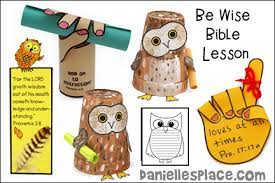Are you ready to unlock the power of storytelling? In this article, we’ll show you how to master the art of writing a parable.
By understanding the purpose behind these captivating tales, choosing the right themes, and crafting compelling characters, you’ll be able to create thought-provoking stories that resonate with your readers.
Get ready to dive into the world of symbolism and metaphor, and learn how to impart wisdom through your words.
Let’s begin this journey of crafting wisdom together.
Understanding the Purpose of Parables
To understand the purpose of parables, you must delve into their underlying meanings and teachings. Parables aren’t just simple stories; they’re powerful tools that convey profound truths and lessons. They serve as a vehicle for delivering moral and spiritual messages in a way that’s relatable and easily understood.
Through the use of vivid imagery and relatable characters, parables engage the listener and encourage introspection. They provoke thought and challenge preconceived notions, inviting individuals to examine their own lives and beliefs.
Parables also have the ability to transcend time and culture, making them relevant and applicable to people from all walks of life. They provide guidance, inspire change, and offer wisdom that can be applied to various aspects of life.
Choosing the Right Themes and Messages
Delve into the underlying meanings and teachings of parables as you consider the importance of choosing the right themes and messages.
When crafting a parable, it’s essential to carefully select the themes and messages that will resonate with your audience. A parable is a powerful tool that can convey profound truths and moral lessons in a relatable and accessible way.
By choosing the right themes and messages, you can engage your readers and spark contemplation and reflection. The themes should be universal and timeless, addressing fundamental aspects of human nature and the human experience. The messages should be clear and impactful, leaving a lasting impression on the reader’s mind.
Crafting Compelling Characters and Settings
As you continue exploring the art of writing a parable, delve into the creation of compelling characters and settings that will transport your readers into the heart of your story. Characters in a parable should be relatable and serve as vessels for the messages you want to convey. Give them distinct personalities, desires, and conflicts that will resonate with your audience.
The settings should also play a crucial role in the story, reflecting the themes and emotions you want to evoke. Whether it’s a bustling city or a serene countryside, the setting should enhance the narrative and immerse your readers in the world you’ve created. Consider using vivid descriptions and sensory details to bring these settings to life.
Using Symbolism and Metaphor for Impact
Crafting a parable that leaves a lasting impact requires skillfully incorporating symbolism and metaphor. These literary devices can add depth and layers of meaning to your story, allowing readers to interpret and reflect upon its message.
Symbolism involves using objects, actions, or characters to represent abstract ideas or qualities. For example, you could use a broken mirror to symbolize shattered dreams or a roadblock to represent obstacles in life.
Metaphor, on the other hand, compares two unrelated things, highlighting their similarities to make a point. Metaphorically, you could describe a person’s heart as a locked door, emphasizing their emotional barriers.
Crafting Thought-Provoking Lessons
Creating thought-provoking lessons is essential when crafting a parable that resonates with readers. A parable shouldn’t only entertain, but also challenge and inspire its audience. To achieve this, you need to carefully consider the message you want to convey.
Start by identifying a universal truth or moral principle that you want your readers to reflect upon. Then, use characters, events, and situations to illustrate this lesson in a relatable and engaging manner. Avoid being didactic or preachy; instead, allow your readers to draw their own conclusions.
Frequently Asked Questions
How Long Does It Take to Write a Parable?
It doesn’t take long to write a parable. Just sit down, let your creativity flow, and craft a meaningful story that imparts wisdom in a concise but powerful way.
Can I Use Real People and Events as Inspiration for My Parable?
Yes, you can use real people and events as inspiration for your parable. Drawing from reality can add depth and relatability to your story, making it more impactful for your readers.
Are There Any Specific Rules or Guidelines for Using Symbolism in a Parable?
Are there any specific rules or guidelines for using symbolism in a parable? Yes, there are. Symbolism in a parable helps convey deeper meaning. Use symbols that resonate with your audience and enhance the message you want to convey.
How Can I Make Sure My Parable Is Relatable to a Wide Audience?
To make sure your parable is relatable to a wide audience, focus on universal themes and emotions. Use familiar settings, characters, and situations. Keep the message clear and concise, and avoid excessive symbolism or convoluted storytelling.
Are There Any Common Mistakes to Avoid When Crafting a Lesson in a Parable?
When crafting a lesson in a parable, avoid common mistakes like being too preachy or heavy-handed. Instead, focus on creating relatable characters and situations that engage the reader and allow them to draw their own conclusions.
Conclusion
So, if you want to write a parable that will leave a lasting impact on your readers, remember to keep the purpose of parables in mind.
Choose themes and messages that resonate with your audience, craft compelling characters and settings to draw them in, and use symbolism and metaphor to create a powerful impact.
And most importantly, make sure your parable leaves your readers with thought-provoking lessons that they can reflect upon long after they finish reading.
Happy writing!

